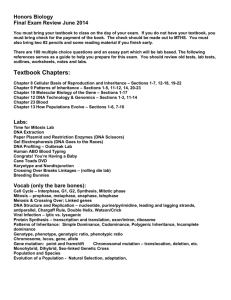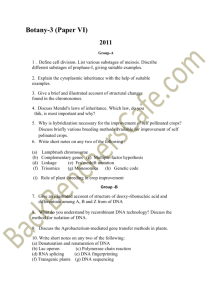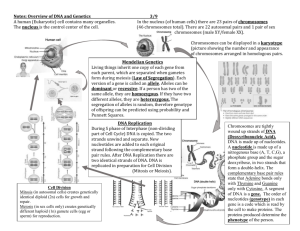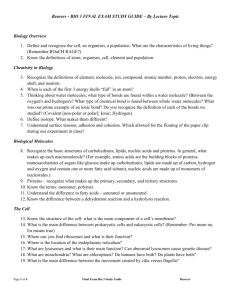3 - Blue Valley Schools
advertisement
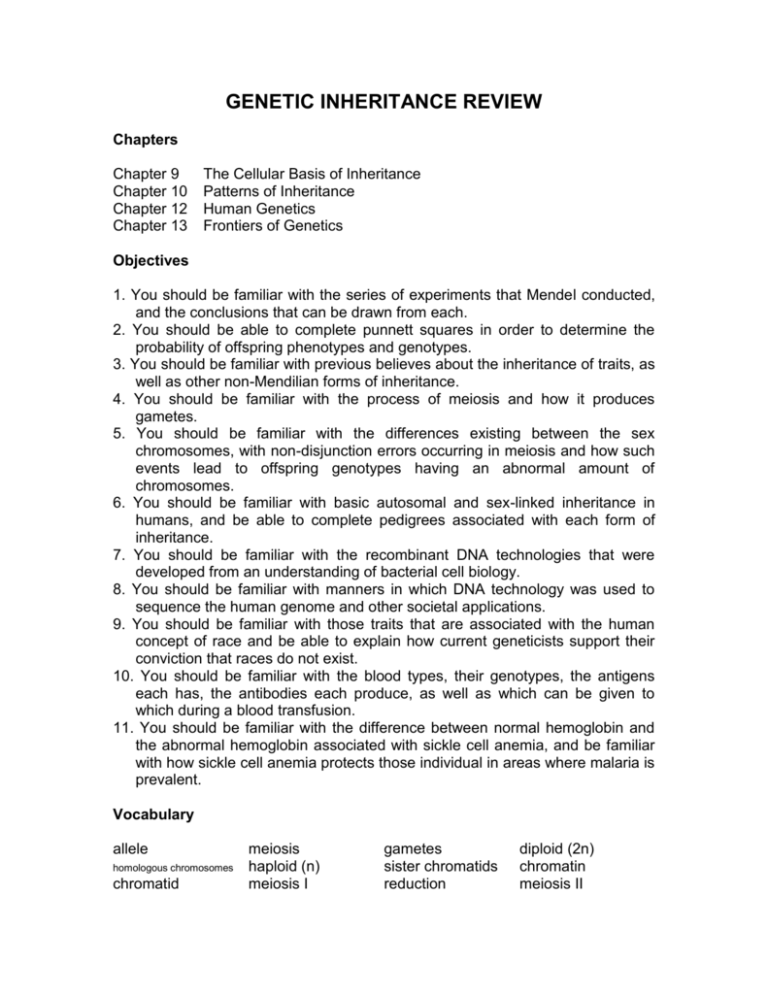
GENETIC INHERITANCE REVIEW Chapters Chapter 9 Chapter 10 Chapter 12 Chapter 13 The Cellular Basis of Inheritance Patterns of Inheritance Human Genetics Frontiers of Genetics Objectives 1. You should be familiar with the series of experiments that Mendel conducted, and the conclusions that can be drawn from each. 2. You should be able to complete punnett squares in order to determine the probability of offspring phenotypes and genotypes. 3. You should be familiar with previous believes about the inheritance of traits, as well as other non-Mendilian forms of inheritance. 4. You should be familiar with the process of meiosis and how it produces gametes. 5. You should be familiar with the differences existing between the sex chromosomes, with non-disjunction errors occurring in meiosis and how such events lead to offspring genotypes having an abnormal amount of chromosomes. 6. You should be familiar with basic autosomal and sex-linked inheritance in humans, and be able to complete pedigrees associated with each form of inheritance. 7. You should be familiar with the recombinant DNA technologies that were developed from an understanding of bacterial cell biology. 8. You should be familiar with manners in which DNA technology was used to sequence the human genome and other societal applications. 9. You should be familiar with those traits that are associated with the human concept of race and be able to explain how current geneticists support their conviction that races do not exist. 10. You should be familiar with the blood types, their genotypes, the antigens each has, the antibodies each produce, as well as which can be given to which during a blood transfusion. 11. You should be familiar with the difference between normal hemoglobin and the abnormal hemoglobin associated with sickle cell anemia, and be familiar with how sickle cell anemia protects those individual in areas where malaria is prevalent. Vocabulary allele homologous chromosomes chromatid meiosis haploid (n) meiosis I gametes sister chromatids reduction diploid (2n) chromatin meiosis II division telophase I & II crossing over polar bodies prophase I & II centrioles Charles Darwin traits blending inheritance Gregor Mendel independent assortment metaphase I & II spindle apparatus sperm phenotype pure breeds homozygous dominant homozygous recessive heterozygous hybrid dominance recessive 3:1 ratio dihybrid cross 9:3:3:1 ratio punnett square testcross incomplete dominance multiple alleles ABO Blood types IA, IB, i HbA, HbS recombination autosomes SRY gene crossing over pedigree aneuploidy sex chromosomes karyotyping Thomas Morgan gene mapping recombinant DNA DNA sequencing DNA polymerase gel electrophoresis RFLP’s plasmids restriction enzymes Sanger Method DNA template normal nucleotides stop nucleotides genome sequencing PCR anaphase I & II nuclear membrane egg pea plants genotypes allele monohybrid cross independent assortment codominance Sickle Cell Anemia x-chromosome XX (female) fruit flies centiMorgans y-chromosome XY (male) gene linkage X-linked recessive autosomal recessive autosomal dominant X-linked dominant non-disjunction Turner’s Syndrome XO Klinefelter’s Syndrome XXY Supermale XYY Walter Sutton chromosome mutations deletions inversions translocations duplications amniocentesis gene therapy DNA primer labeled nucleotides DNA fingerprinting



